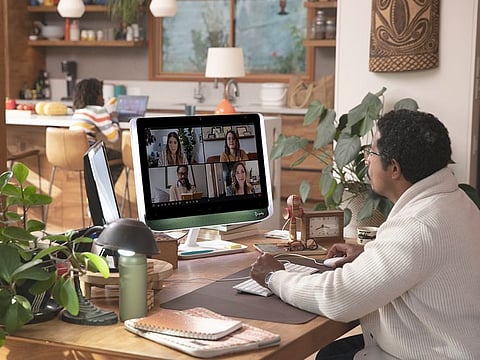UAE and Gulf workforces seek a work-life balance after 19 months of hybrid ways
More employees find themselves overworked and exhausted - and with no easy solutions

Dubai: Hybrid working may be the one outcome of the pandemic that will be around for some time to come – or forever. But increasingly, workforces are hoping that flexibility on ways of working will not lead to work-life balance becoming a casualty.
A new Microsoft survey sure presents an “alarming” picture of the reality at workplaces – and those putting in their hours from their homes. “The high productivity levels we saw during the crisis actually mask a trend of exhaustion in the workforce,” said Mohammed Arif, Microsoft’s Business Group Director for Modern Workplace and Security. “One in five believe their employer does not care about their work-life balance. Some 54 per cent feel overworked, while 39 per cent feel exhausted.”
By now, most businesses state that productivity levels did not suffer during the extreme pandemic phase and continues to be the case even now. Work is getting done, no doubt, but it is coming at a cost.
“We have measured increased activity in Microsoft Teams meetings and chats, emails delivered, and the number of people working on documents,” said Arif. “As we have already covered, going hybrid over these past 19 months has led to very little change in productivity levels - but the satisfaction of employees with their inter-colleague connections has dropped from 86 per cent to 79 per cent.
“Enterprises will need to address this gap or risk seeing more talent moving to companies that offer greater flexibility.”
Toll rises
Other reports have been issued that burrow into the toll that this abnormal phase of work and life has had. But those reports dealt more on the mental health as a factor, of individuals failing to cope with the changing work expectations from them, the creeping dread of feeling isolated, and all of the other related issues.
The Microsoft findings cast light on what the new ways of getting work done is impacting on the collective workforce within an organization.
“Organizations will have to weigh their options, as some of them will require their core staff to be physically present,” said Arif. “Hybrid work is inevitable - and to attract and retain talent, there must be investment in new work models that enable managers to monitor and optimize operations.”
Get that trust rolling
For a hybrid-work model to actually deliver, some concepts of the past should be brought back and given a whole new meaning. Establishing trust would lead the charts in any workplace reorganization.
“Around half of the leaders we polled agree that it will be important for managers to lead with empathy and trust and assume positive intent,” the Microsoft official added. “Communication was their highest priority, at 62 per cent, with trust a close second at 59 per cent.
“In addition, skill-building will play a major role in the hybrid environment, as 72 per cent of executives believe training is essential for people to work effectively in a flexible workplace.”
No going away
Of one thing, Microsoft’s Arif is dead certain – there is no getting away from offering hybrid work as an option. Sure, offices will be fuller as more staff return to the routine of working at the office more times in a week. But ‘hybrid’ will never be far away.
“To maintain quality and output levels, they must avoid adding to the stress of their already beleaguered workforces,” said Arif. “Some 41 per cent of employees are considering leaving their current employer, and 46 per cent are likely to do so because they have been given the option to work remotely.
“It is necessary to redesign the workplace and invest in space and technology to bridge the physical and digital worlds. Equally important is rethinking the entire employee experience.
“Success in the hybrid-work era will be decided by how diligently enterprises examine these areas and to what degree they manage to satisfy employees’ needs.”
Sign up for the Daily Briefing
Get the latest news and updates straight to your inbox









